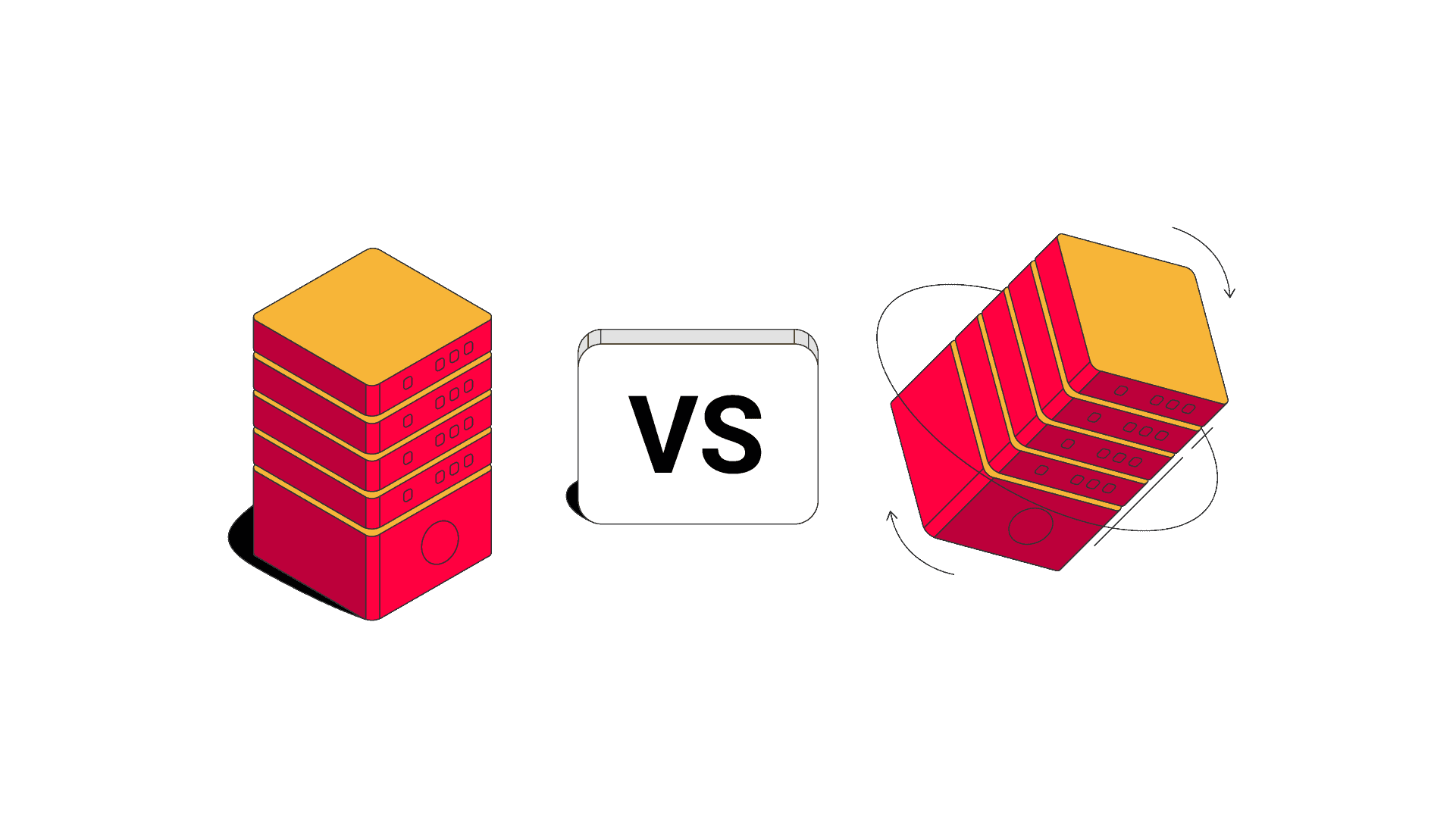Static vs Rotating Proxies: A Comparison
Should they stay or should they go? That’s the question, and here’s the answer.

So, you’ve been researching proxy servers and stumbled upon a dilemma: static vs rotating proxies? Maybe you want IPs to cop sneakers. Or you’re considering static datacenter proxies for a web scraping project because they’re cheaper. In any case, this guide will help you compare these two proxy types to understand which one you need. Let’s get started.
What Are Static Proxies?
Static proxies are middlemen IP addresses that don’t change. With a static proxy server, you’ll always be connecting to websites via the same IP address, even if your own IP is dynamic.
Generally, only datacenter proxies and ISP proxies can be static. That’s because they’re hosted in servers that are always online and allow assigning an IP address to one person. Mobile proxies can technically be static too if they run on a phone farm; but, due to their technical qualities, mobile carriers will rotate the address sooner or later anyway. Residential proxies always rotate.
If you’re not sure how they look like, static proxies are simple to identify. They come in a list of different IP addresses, and you connect through each individually. For example:
First static proxy – 123.456.789.10:1000
Second static proxy – 234.567.891.112:1000
Third static proxy – 345.678.910.11:1000
What Are Rotating Proxies?
Rotating proxies automatically give you new proxies from a pool of IP addresses. The rotation interval can be based on time (1, 10, 30 minutes) or number of connection requests. As the popular explanation goes, you can send 10,000 connection requests and make them via 10,000 different IP addresses.
In theory, every proxy type can rotate; the trick is in the setup. However, rotating proxy servers are usually associated with residential IP addresses. That’s because residential proxies rely on real people with unstable connections, so they can’t really be static. At best, you can have a sticky IP address that stays unchanged for 10-30 minutes.
Unlike their counterparts, rotating proxies don’t give you direct access to proxy IPs. Instead, you get one backconnect IP address that functions as a gateway to the proxy pool. It selects and assigns proxies based on your requirements.
Comparing Static and Rotating Proxies
Let’s compare static vs rotating proxies feature by feature.
| Static proxies | Rotating proxies | |
| IP rotation | No rotation. A static proxy server will always connect you to the same IP address. | Automatic rotation. A rotating proxy server will constantly give you new IP addresses. |
| Exclusivity | Shared or dedicated. Depending on your needs, providers can assign proxies for your exclusive use. | Shared only. You access a pool of IP addresses together with other people. |
| Performance | Strong. Static proxies are often hosted on virtual servers with fast, 1 Gbps or even 10 Gbps internet connections. This doesn’t apply to free proxy lists. | Depends. Rotating datacenter proxies will perform well; residential and mobile proxies have a less predictable, and sometimes slow, performance. |
| Format | IP list. You usually receive a list of IP addresses. | Gateway server. You connect to a load balancing server that routes your requests via different addresses. |
| Pricing | IP based. Providers sell static proxies per IP address. | Traffic or port based. Providers sell rotating proxies by the amount of traffic you use, or the number of IPs you can access at the same time. |
| Flexibility | Low. Once you get a static proxy IP, it’s hard to change its parameters like location. You’re stuck with what you have. | High. Rotating proxies automatically change IPs with each request or session. You can easily switch locations and other parameters. |
| Maintenance | Medium-high. You have to discard, replace, and otherwise take care of each individual address. | Low. Something’s not working? Simply rotate the IP address away for a new one. |
When to Use Static vs Rotating Proxies
Broadly speaking, rotating proxies are better for tasks where you need to constantly change your IP address. This primarily concerns scraping large amounts of data from e-commerce, travel and hospitality, and other websites. If you make too many requests from the same IP address, the website will start throttling you, showing you CAPTCHAs, and finally end up blocking your IP.
Static proxies work best when you need to keep the same identity for a long time: manage multiple accounts or go through a multi-step flow (like checking out from a sneaker store). Many of these functions can be achieved by creating sticky sessions with residential and mobile IPs, but sometimes the provided 10 or 30 minutes aren’t enough.
Advanced users may choose static IPs to play around their strengths, in particular exclusive use and IP-based pricing. The first ensures reliability, while the second can cut costs by avoiding traffic based pricing models. However, using static proxies for tasks like web scraping will require setting up and maintaining IP rotation by yourself, which takes experience.
The Bottom Line
The choice between static vs rotating proxies depends on your project requirements. Static proxies are ideal for tasks like managing multiple accounts, when you need to hold the same IP address. Rotating proxies, on the other hand, are better for web scraping or other automation projects.

Frequently Asked Questions about Static vs Rotating Proxies
Sticky IPs hold the same address for a specific amount of time. For example, 1, 10, 30 minutes threshold.
No. You can use a static proxy server for months at a time. They’re datacenter or ISP addresses. Sticky proxies, on the other hand, are residential IPs and come with the ability to hold sticky sessions.